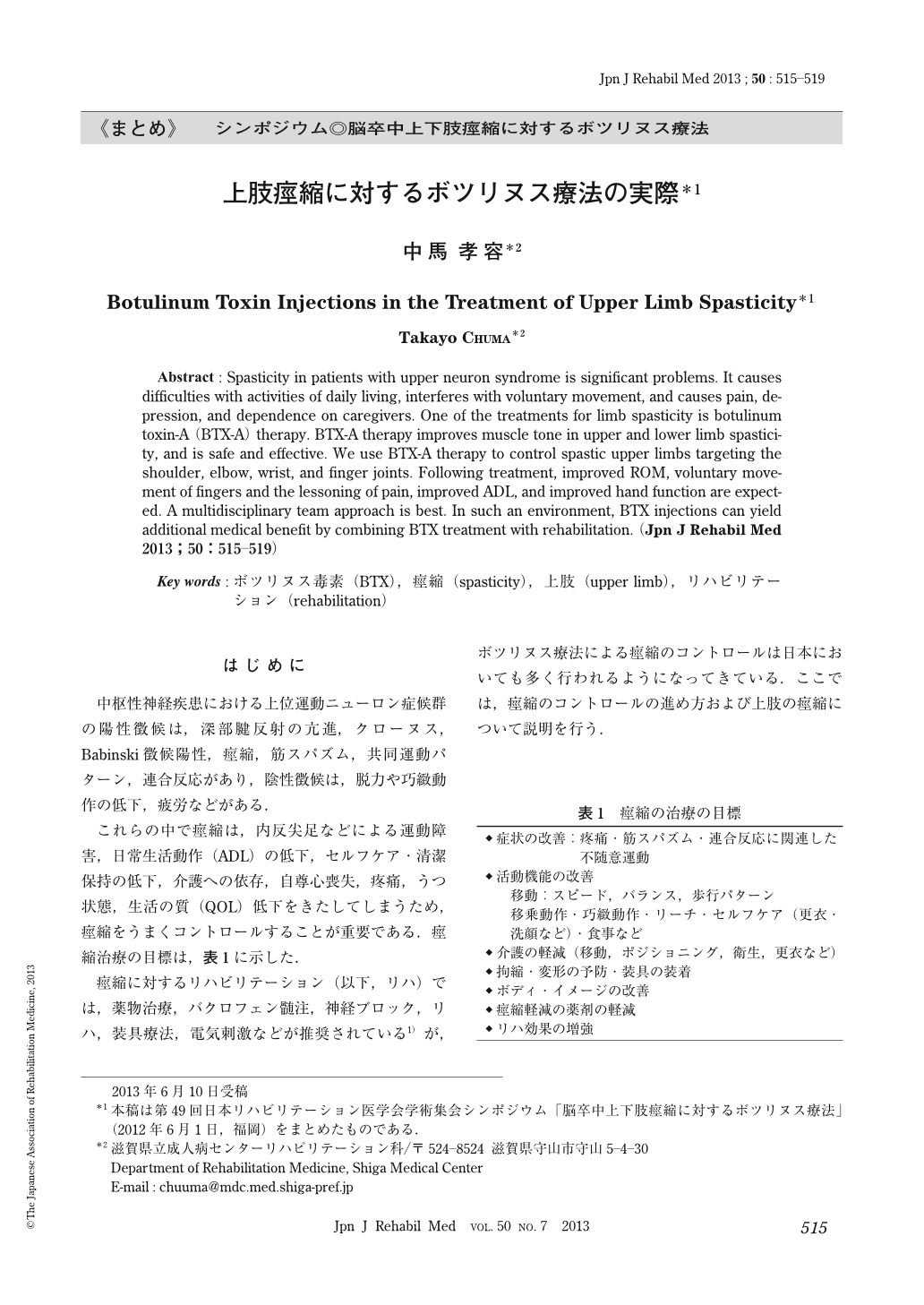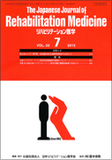Japanese
English
- 販売していません
- Abstract 文献概要
- 1ページ目 Look Inside
- 参考文献 Reference
はじめに
中枢性神経疾患における上位運動ニューロン症候群の陽性徴候は,深部腱反射の亢進,クローヌス,Babinski徴候陽性,痙縮,筋スパズム,共同運動パターン,連合反応があり,陰性徴候は,脱力や巧緻動作の低下,疲労などがある.
これらの中で痙縮は,内反尖足などによる運動障害,日常生活動作(ADL)の低下,セルフケア・清潔保持の低下,介護への依存,自尊心喪失,疼痛,うつ状態,生活の質(QOL)低下をきたしてしまうため,痙縮をうまくコントロールすることが重要である.痙縮治療の目標は,表1に示した.
痙縮に対するリハビリテーション(以下,リハ)では,薬物治療,バクロフェン髄注,神経ブロック,リハ,装具療法,電気刺激などが推奨されている1)が,ボツリヌス療法による痙縮のコントロールは日本においても多く行われるようになってきている.ここでは,痙縮のコントロールの進め方および上肢の痙縮について説明を行う.
Abstract : Spasticity in patients with upper neuron syndrome is significant problems. It causes difficulties with activities of daily living, interferes with voluntary movement, and causes pain, depression, and dependence on caregivers. One of the treatments for limb spasticity is botulinum toxin-A (BTX-A) therapy. BTX-A therapy improves muscle tone in upper and lower limb spasticity, and is safe and effective. We use BTX-A therapy to control spastic upper limbs targeting the shoulder, elbow, wrist, and finger joints. Following treatment, improved ROM, voluntary movement of fingers and the lessoning of pain, improved ADL, and improved hand function are expected. A multidisciplinary team approach is best. In such an environment, BTX injections can yield additional medical benefit by combining BTX treatment with rehabilitation.

Copyright © 2013, The Japanese Association of Rehabilitation Medicine. All rights reserved.


